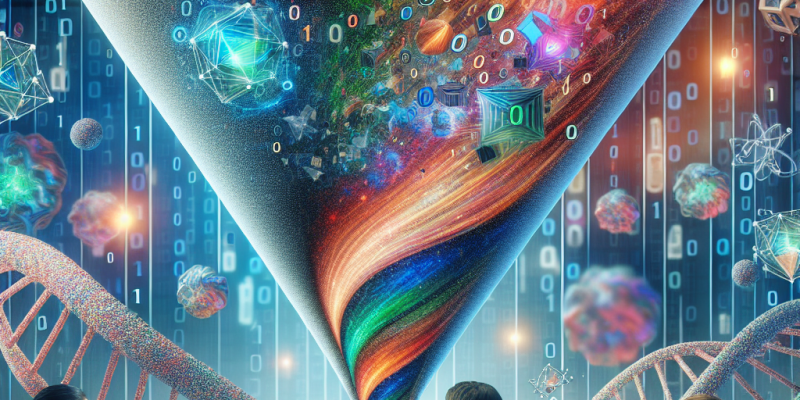From Algorithms to Applications: The Latest Breakthroughs in Machine Learning Technology

From Algorithms to Applications: The Latest Breakthroughs in Machine Learning Technology
In recent years, machine learning (ML) has evolved from a niche area of computer science to a cornerstone of modern technology, reshaping industries and driving innovation at an unprecedented pace. With breakthroughs in algorithms, data availability, and computational power, ML now permeates various applications — from healthcare to finance, transportation to entertainment, and beyond. This article explores recent advancements in ML technology and their transformative impact across different sectors.
The Evolution of Algorithms
At the heart of machine learning lies the evolution of algorithms which have significantly enhanced the capability of ML systems. The rise of deep learning, particularly Convolutional Neural Networks (CNNs) and Recurrent Neural Networks (RNNs), has considerably improved the performance of tasks such as image and speech recognition. The introduction of advanced architectures like Transformers has revolutionized Natural Language Processing (NLP), enabling models to understand and generate human-like text with greater accuracy and context.
Recently, innovations such as Graph Neural Networks (GNNs) have gained attention for their ability to process and analyze complex relational data. GNNs are particularly suited for applications in social network analysis, drug discovery, and recommendation systems, allowing for better modeling of intricate interconnections.
Moreover, developments in reinforcement learning (RL), especially self-supervised learning, have led to systems capable of making decisions based on dynamic environments. This enhancement is evident in areas like robotics, where RL is used to enable machines to learn optimal behavior through trial and error.
Breakthroughs in Hardware and Data Availability
Algorithms alone do not drive the ML revolution; improvements in hardware have also played a pivotal role. The rise of Graphics Processing Units (GPUs) and more recently, Tensor Processing Units (TPUs) has vastly accelerated the training of complex models. Cloud computing has further democratized access to powerful computational resources, allowing even small startups to build cutting-edge ML applications.
Equally important is the explosion of data generated in our increasingly digital world. This influx has enabled ML systems to learn from diverse datasets, enhancing model performance across various applications. Techniques like federated learning, which allow models to be trained across decentralized data sources while preserving privacy, represent a strategic response to the challenges posed by data ownership and privacy concerns.
Real-World Applications and Impact
The applications of modern machine learning technology are both diverse and impactful. Here are some notable areas experiencing significant advancements:
Healthcare
In healthcare, ML has been instrumental in enhancing diagnostics and treatment plans. Algorithms are now capable of analyzing medical images to detect conditions like cancer with greater precision than human radiologists. Predictive models are increasingly used to forecast disease outbreaks and patient deterioration, enabling proactive intervention and resource allocation. Recent breakthroughs in drug discovery, powered by ML, drastically reduce the time required to identify and develop new treatments.
Finance
The finance sector has leveraged ML for risk assessment, algorithmic trading, fraud detection, and customer service. Advanced anomaly detection algorithms identify fraudulent transactions in real-time, while predictive analytics optimize trading strategies and portfolio management. Moreover, personalized banking experiences powered by recommendation systems are becoming the norm, providing customers with tailored financial advice and products.
Autonomous Systems
Machine learning is the backbone of autonomous vehicles and drones. Advanced perception systems that combine computer vision with sensor data allow machines to understand and navigate their environment safely. Recent breakthroughs in ML algorithms have improved obstacle recognition and decision-making processes, bringing us closer to fully autonomous transport.
Consumer Technology
In consumer technology, ML applications are ubiquitous. Virtual assistants powered by NLP, like Amazon’s Alexa and Google Assistant, continue to improve in understanding human commands and responding appropriately. Recommendation algorithms on streaming platforms like Netflix and Spotify enhance user experience by curating personalized content, increasing viewer engagement, and satisfaction.
Ethical Considerations and Future Directions
As machine learning technology continues to advance, it raises essential ethical considerations regarding bias, fairness, transparency, and accountability. The risk of perpetuating bias in datasets and algorithms necessitates the development of robust evaluation frameworks to ensure equitable outcomes across diverse populations.
Looking ahead, the next frontier for ML technology includes advancements in explainable AI (XAI), which aims to make machine learning models more interpretable and understandable to end-users. Ensuring user trust is crucial as ML becomes more integral to decision-making processes in critical areas like finance, healthcare, and law enforcement.
Conclusion
The journey of machine learning, from algorithms to real-world applications, illustrates a landscape rich with innovation and promise. As breakthroughs continue to unfold, they enhance our ability to analyze, understand, and interact with the world around us. The transformative power of ML technology holds the potential to address some of humanity’s most pressing challenges while necessitating ongoing dialogue about the ethical implications that accompany these advancements. As we embrace these developments, the focus must remain on harnessing technology responsibly and thoughtfully for the greater good.














